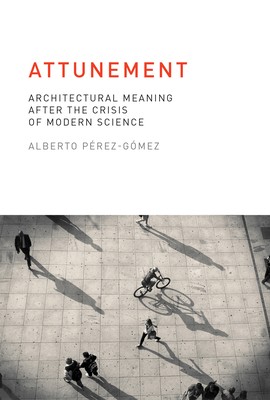
- Išsiųsime per 10–14 d.d.
- Autorius: Alberto Perez-Gomez
- Leidėjas: MIT Press
- ISBN-10: 0262528649
- ISBN-13: 9780262528641
- Formatas: 15.2 x 22.6 x 2.3 cm, minkšti viršeliai
- Kalba: Anglų
- Extra -25 % nuolaida šiai knygai su kodu: ENG25
Atsiliepimai
Aprašymas
How architecture can move beyond the contemporary enthusiasms for the technically sustainable and the formally dazzling to enhance our human values and capacities.Architecture remains in crisis, its social relevance lost between the two poles of formal innovation and technical sustainability. In Attunement, Alberto Pérez-Gómez calls for an architecture that can enhance our human values and capacities, an architecture that is connected--attuned--to its location and its inhabitants. Architecture, Pérez-Gómez explains, operates as a communicative setting for societies; its beauty and its meaning lie in its connection to human health and self-understanding.
Our physical places are of utmost importance for our well-being. Drawing on recent work in embodied cognition, Pérez-Gómez argues that the environment, including the built environment, matters not only as a material ecology but because it is nothing less than a constituent part of our consciousness. To be fully self-aware, we need an external environment replete with meanings and emotions.
Pérez-Gómez views architecture through the lens of mood and atmosphere, linking these ideas to the key German concept of Stimmung--attunement--and its roots in Pythagorean harmony and Vitruvian temperance or proportion. He considers the primacy of place over space; the linguistic aspect of architecture--the voices of architecture and the voice of the architect; architecture as a multisensory (not pictorial) experience, with Piranesi, Ledoux, and Hejduk as examples of metaphorical modeling; and how Stimmung might be put to work today to realize the contemporary possibilities of attunement.
EXTRA 25 % nuolaida su kodu: ENG25
Akcija baigiasi už 4d.10:08:31
Nuolaidos kodas galioja perkant nuo 10 €. Nuolaidos nesumuojamos.

- Autorius: Alberto Perez-Gomez
- Leidėjas: MIT Press
- ISBN-10: 0262528649
- ISBN-13: 9780262528641
- Formatas: 15.2 x 22.6 x 2.3 cm, minkšti viršeliai
- Kalba: Anglų Anglų
Architecture remains in crisis, its social relevance lost between the two poles of formal innovation and technical sustainability. In Attunement, Alberto Pérez-Gómez calls for an architecture that can enhance our human values and capacities, an architecture that is connected--attuned--to its location and its inhabitants. Architecture, Pérez-Gómez explains, operates as a communicative setting for societies; its beauty and its meaning lie in its connection to human health and self-understanding.
Our physical places are of utmost importance for our well-being. Drawing on recent work in embodied cognition, Pérez-Gómez argues that the environment, including the built environment, matters not only as a material ecology but because it is nothing less than a constituent part of our consciousness. To be fully self-aware, we need an external environment replete with meanings and emotions.
Pérez-Gómez views architecture through the lens of mood and atmosphere, linking these ideas to the key German concept of Stimmung--attunement--and its roots in Pythagorean harmony and Vitruvian temperance or proportion. He considers the primacy of place over space; the linguistic aspect of architecture--the voices of architecture and the voice of the architect; architecture as a multisensory (not pictorial) experience, with Piranesi, Ledoux, and Hejduk as examples of metaphorical modeling; and how Stimmung might be put to work today to realize the contemporary possibilities of attunement.




Atsiliepimai